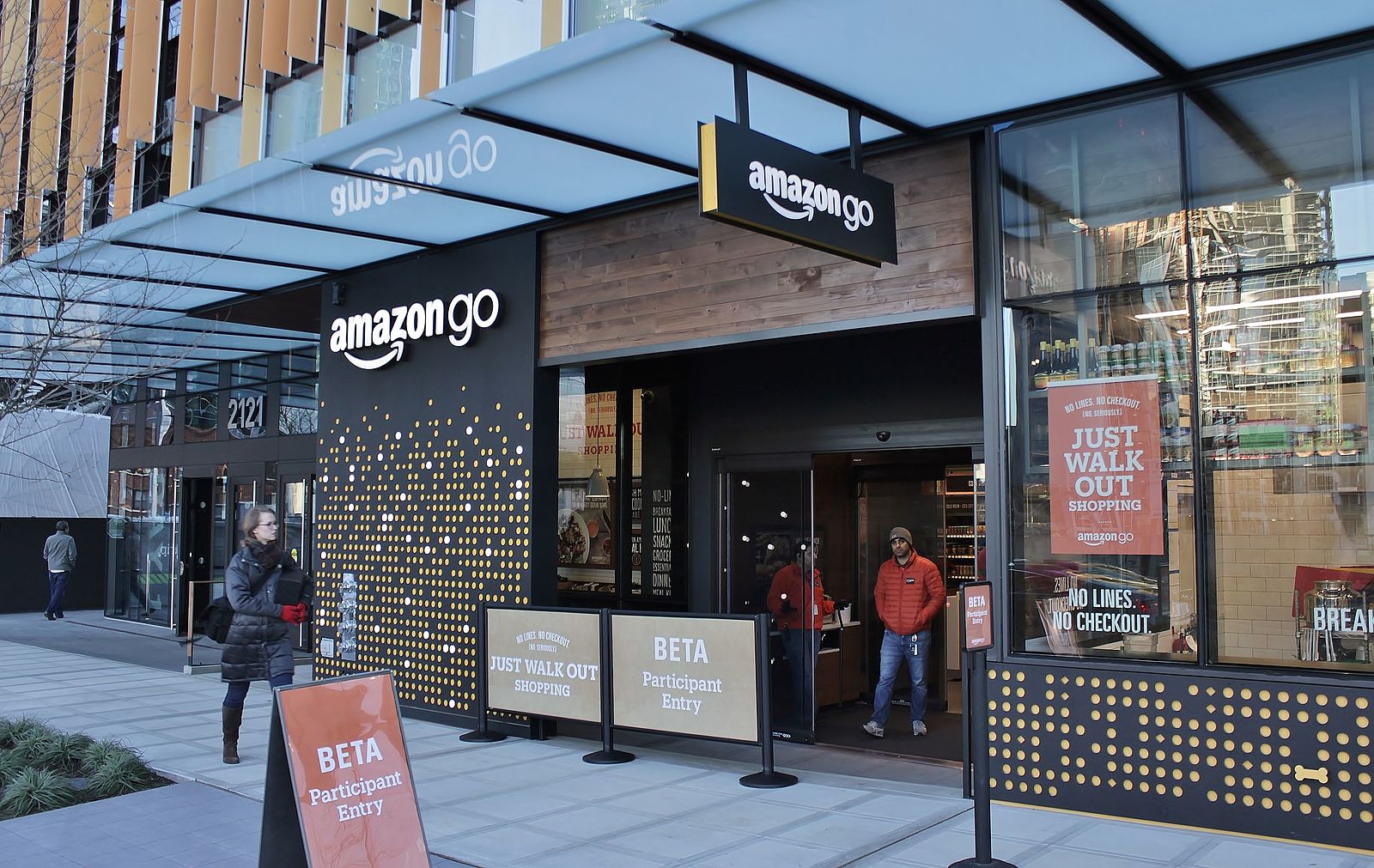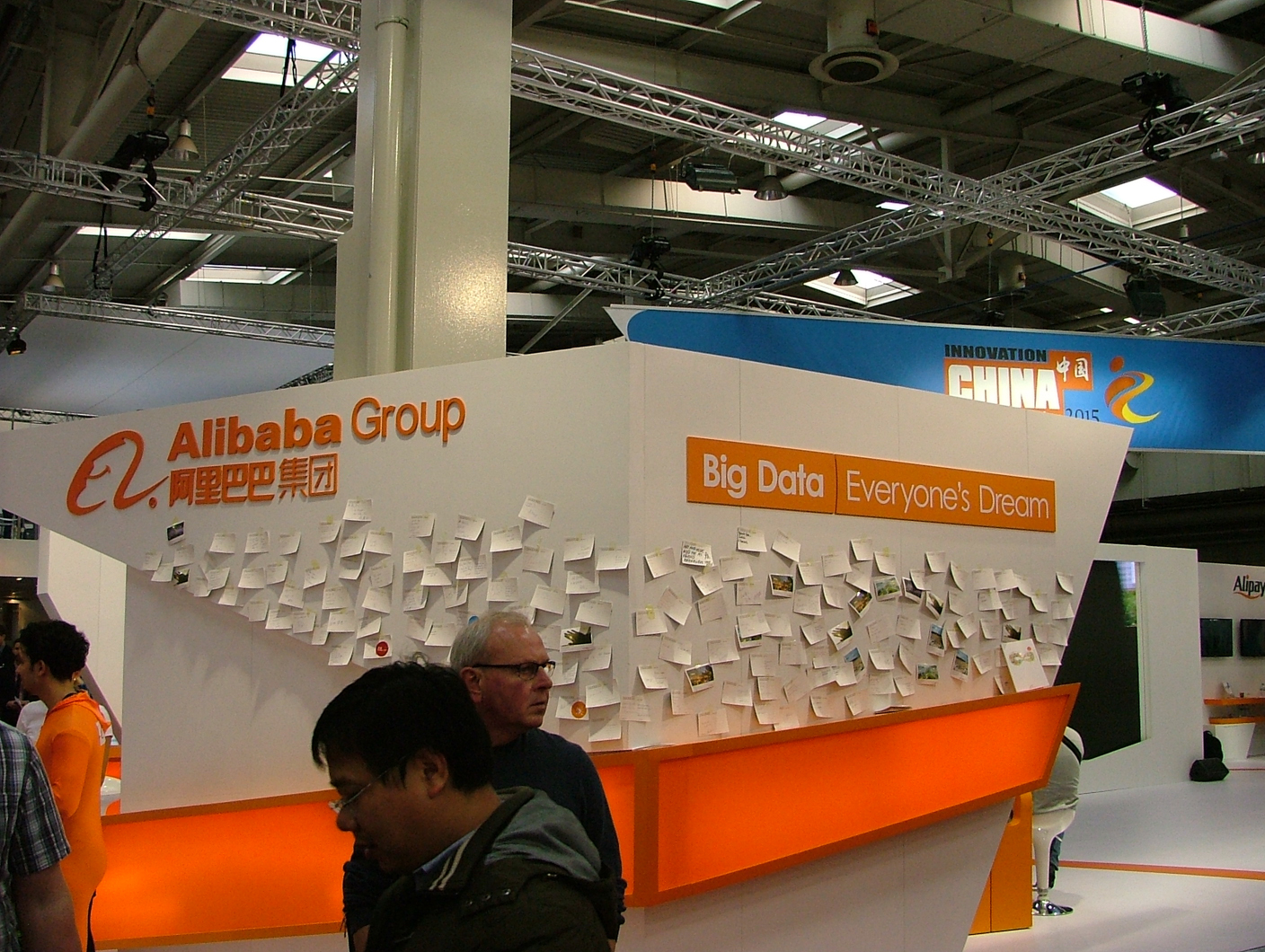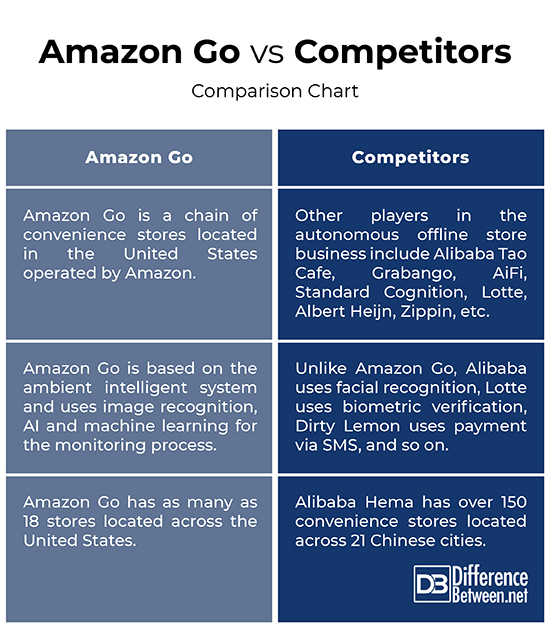Difference Between Amazon Go and Competitors
Amazon has expanded its line of business in the past couple of years in its bid to be the largest and most customer-centric company in the world. Amazon is constantly investing in new services and products to expand its core retail business. One such area in which it has publicized a new vision is in-store shopping. The retail giant has recently introduced the world’s most advanced shopping technology. In 2018, Amazon announced this new concept in physical shopping known as “Amazon Go.” The company advertises it with the tag line, “No lines, no checkout – just grab and go!” It’s a chain of convenience stores operating in the United States by Amazon.
Although it started with a single store in Seattle, Amazon plans to open as many as 3,000 of its Amazon Go stores by the year 2021. But the retail giant is not alone in the race to roll out this new method of cashier-less grocery shopping. Other players have jumped into the race to grab the top spot. Globally, Amazon is competing with everyone from Alibaba’s Hema to New York’s Dirty Lemon and South Korean multinational conglomerate, Lotte. The competition is fierce as their competitors are already getting ahead with some new retail offerings of their own.

What is Amazon Go?
Amazon Go is the best example of the implications of the Amazon’s customer obsession toward making the complex simple. This is exactly what Amazon did – it got rid of the worst thing about retail shopping: the checkout lines. Amazon took that idea and brought it into real use – it announced a new concept of physical shopping known as Amazon Go, a shopping store where shoppers could walk in, grab the stuff they wanted and just leave, without any interaction with the cashier. In 2018, Amazon opened the first Amazon Go store in Seattle. To shop at an Amazon Go store, you just an Amazon account and a smartphone with Amazon Go app installed. You just walk into the convenience store after verifying yourself with a QR code generated by the Amazon Go app and then grab the items from the shelf, and after you’re done, just leave the store without stopping by any cash registers. The store will charge your Amazon account and the receipt can be found in the app itself.

Who are the other Competitors of Amazon Go?
Unfortunately, Amazon is not the only one changing the retail game. The competition for the top spot is fierce, especially with new players stepping up their games. Alibaba, for one, is reimagining the retail experience by its new business model and its very own cashier-less grocery store, Hema. Launched in 2015, Hema uses a new retail business model that integrates online and offline products and services. The Chinese retail and e-commerce giant created a digitally empowered retail offering which combines media, entertainment and financial offerings to create a concept it calls “New Retail.” Hema is the company’s internet powered supermarket, like Amazon Go and so much more. Other players in the cashier-less retail business include San Francisco-based Standard Cognition, Trigo Vision of Israel, Netherlands-based Albert Heijn, and more.
Difference between Amazon Go and the Competitors
Market
– Amazon Go is a new retail business model based on in-store shopping. Basically, Amazon Go is a chain of convenience stores located in the United States operated by Amazon. In 2018, Amazon opened the first Amazon Go store in Seattle. As of 2019, it has around 20 stores located in Seattle, San Francisco, Chicago and New York. Amazon plans to open as many as 3,000 Amazon Go stores by 2021. There are other convenience stores based on the similar concept, including Alibaba’s Tao Café and Hema, San Francisco-based Standard Cognition, Israel’s Trigo Vision, Netharlands’ Albert Heijn, and more.
Technology
– While Amazon Go stores and their potential competitors are based on the same experimental ambient intelligence system, the technology behind their systems vary differentially. The Amazon Go’s monitoring process is managed by image recognition, artificial intelligence and machine learning. Wight sensors and shelf cameras track products removed or replaced, and a 3D representation of each customer is built and tracked. Then there’s a backend system which processes the transaction automatically for a smooth and seamless shopping experience. Alibaba’s Hema, on the other hand, uses facial recognition at self-checkout kiosks while the South Korean Lotte uses biometric verification.
Amazon Go vs. Competitors: Comparison Chart

Summary of Amazon Go vs. Competitors
Amazon Go is a chain of convenience stores located in the United States and operated by retail giant Amazon. It’s a new retail business model, a new method of cashier-less grocery shopping where shoppers could walk in, grab the stuff they wanted and just leave, without any interaction with the cashier. This new business model is based on the experimental ambient intelligent system. The whole process is accomplished with the help of hundreds of cameras watching you. The whole monitoring process is managed by image recognition, artificial intelligence and machine learning, so shoplifting is virtually impossible at Amazon Go stores. But unfortunately, Amazon is not alone in the race of cashier-less convenience stores. There are other companies investing in the same concept. Alibaba Tao Café and Hema is yet another example of an ambient intelligent system. There are other players using the same retail business model fighting for the top spot.
- Difference Between Caucus and Primary - June 18, 2024
- Difference Between PPO and POS - May 30, 2024
- Difference Between RFID and NFC - May 28, 2024
Search DifferenceBetween.net :
Leave a Response
References :
[0]Pearlson, Keri E. et al. Managing and Using Information Systems: A Strategic Approach. Hoboken, New Jersey: John Wiley & Sons, 2019. Print
[1]Mahmood, Zaigham. Guide to Ambient Intelligence in the IoT Environment: Principles, Technologies and Applications. Berlin, Germany: Springer, 2019. Print
[2]Culey, Sean A. Transition Point: From Steam to the Singularity. Leicester, United Kingdom: Troubador Publishing, 2018. Print
[3]Yeung, Arthur and Dave Ulrich. Reinventing the Organization. Brighton, Massachusetts: Harvard Business Press, 2019. Print
[4]Anderson, Steve. Success Secrets of Amazon. Mumbai, India: Jaico Publishing House, 2019. Print
[5]Image credit: https://de.wikipedia.org/wiki/Alibaba_Group#/media/Datei:2015-03-19_CeBIT_2015l_by_Olaf_Kosinsky-24.jpg
[6]Image credit: https://commons.wikimedia.org/wiki/File:Amazon_Go_in_Seattle,_December_2016.jpg
